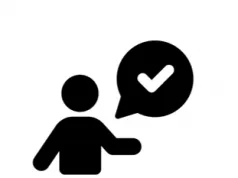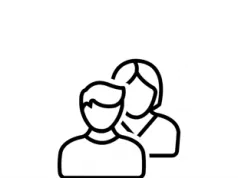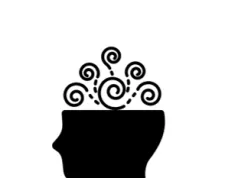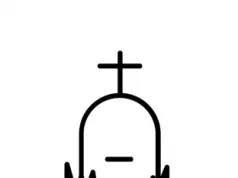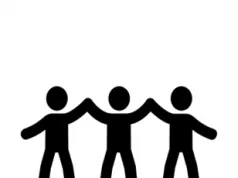The Unconscious, Conscious and Preconscious minds form a key concept in Sigmund Freud’s overall Psychoanalytic theory. With the mind clearly being crucial in mental health, Freud’s theory is important to analyse.
Central to Freud’s theory is the idea that the conflict of three distinct forces resulted in the behaviour and personality seen in an individual. These three forces operate at different levels of awareness in the mind. These forces are the aforementioned Unconscious, Conscious and Preconscious minds.
Embed from Getty ImagesFreud’s Mind Analogy
A good place to start is the analogy that Freud used to suggest his theory of the mind. He used an iceberg to depict his ideas. When one sees an iceberg, they can only see the tip above water – and are unaware of what is under the water.
Freud suggested that this is like the human mind. A person can only see a small amount, the rest lies underwater. The tip of the iceberg refers to the conscious mind, with the remainder of the iceberg out of view under the water – which refers to the unconscious mind.
One doesn’t truly know how much of the iceberg is out of view – the unconscious mind may be very, very deep. In such cases, it can be very difficult to reach the deep recesses of the unconscious mind.
The other area is the middle-ground of the two – and known as the pre-conscious. It is the part of the iceberg that is mainly submerged below the water, yet still visible from above.
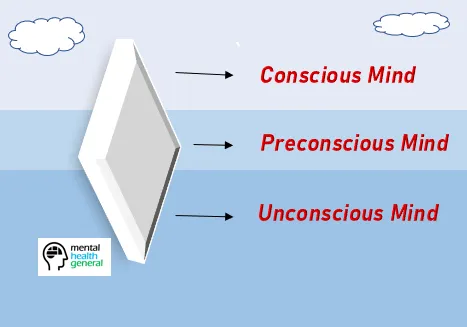
The Conscious Mind
The Conscious Mind refers to the mind we know about, and everything within it. This is the easiest part to understand – as it is simply what we all have. It includes everything we consciously know about.
We use our mind to think and analyse, and decide how to act. But Freud’s theory suggests that the conscious mind does not have all of our thoughts and feelings. Instead, some of these belong in the Unconscious or Preconscious minds.
Through therapy, a person will be able to bring thoughts, memories and other feelings from the unconscious mind to the conscious mind. This can be used when a person is going through mental health problems – which Freud argues is the result of traumas, events and feelings that are stuck in the unconscious or preconscious mind.
Read More: What is the Conscious Mind in Mental Health?
The Unconscious Mind
The Unconscious Mind is made up of a range of feelings, thoughts and memories that are outside our immediate conscious. Most of these feelings and memories are negative. For example, they may be traumas, fears, painful feelings or thoughts.
The process of these feelings, thoughts and memories not being in the conscious mind is called Repression. This is where the mind intentionally blocks out certain thoughts, feelings or memories in order to protect itself.
Freud suggests that these areas continue to influence the day-to-day life of a person. This often manifests itself as symptoms of mental illness – like Depression or Anxiety.
But a person isn’t aware of the influence of the unconscious mind – as it is outside of their awareness. Therefore, they may require the use of therapy to try and process the elements bothering them in a positive way.
In the wider picture of Freud’s theory, Freud argued that basic instincts (called Life and Death instincts) are present in the unconscious mind. Life instincts is based on survival, while death instincts refer top thoughts of anger and aggression that are directed externally.
Any such urges are withheld from the conscious mind as they are seen as unacceptable. In order for this process to take place, and for the negative urges to be kept out, humans employ Defence Mechanisms.
Read More: What is the Unconscious Mind in Mental Health?
The Preconscious Mind
The Preconscious Mind is made up of anything that may potentially be brought into the conscious mind, but isn’t actively thought of.
But, given the right trigger, a person will normally know it. Therefore, an example would be our PIN number. While we don’t go around thinking about it all day, when we need it to pay for something, we know it.
The preconscious mind can be seen as a “buffer” between the conscious and unconscious. The preconscious essentially filters what information can reach the conscious mind, and what can’t.
Read More: What is the Preconscious Mind in Mental Health?
How do you reach the unconscious mind?
Freud’s theories on the mind are part of his overall theory of Psychoanalysis. His ideas and theories continue to have a big impact to this day. They are most widely seen in two types of talking therapy – Psychoanalytical Psychotherapy and Psychodynamic Psychotherapy.
Freud suggested that it was possible to reach the unconscious mind through certain techniques that could be done in therapy. There are three main techniques that Freud would typically use in therapy sessions to help his patients:
- Free Word Association: Free word association involves a therapist letting their patient speak freely. The patient is encouraged to talk about whatever is on their mind. In doing so, it provides a therapist with a chance to find consistent themes or patterns, which can lead to the therapist identifying potential issues.
- Dream Analysis: Dream analysis involves the therapist analysing and interpreting the dreams that a person has. Freud believed that dreams are often linked to past experiences being repressed, which allows dreams to offer a view of a person’s unconscious mind.
- Freudian Slips: Freudian Slips are “slips of the tongue” that take place. Freud believed that when someone accidentally said a certain word or phrase, that they secretly meant to say this – and that this was the unconscious mind breaking free. A therapist would therefore pay close attention to everything a person says.
Main Article: How Can You Reach the Unconscious Mind in Mental Health Therapy?
Summary
It is difficult to know or even theorise just how the mind works outside of its conscious. It is something that has caused debate – whether or not the unconscious mind explains this is unknown.
But Freud’s theories continue to be practiced in many therapies in the contemporary age. His ideas on the mind are very important in mental health.
See Also
- Overview of Sigmund Freud’s Theories
- Freud’s Theory of the Unconscious, Conscious and Preconscious Minds in Mental Health
- What is the Unconscious Mind in Mental Health?
- What is the Preconscious Mind in Mental Health?
- What is the Conscious Mind in Mental Health?
- What is the Difference Between The Unconscious and Conscious Mind in Mental Health?
- How Can You Reach the Unconscious Mind in Mental Health Therapy?
- Homepage
Disclaimer
This website should be used purely for informational purposes, and does not intend to, nor should it ever, be used as a replacement for professional medical advice.
We strive to keep all of our pages updated, and ensure that our website is full of factual and in-depth information. However, we encourage you to browse this website with care.
As a reminder, this website and all content within it cannot and should not replace the advice of a trained medical professional. You can read our full disclaimer at this link.
Helplines
If you are struggling with your mental health, help is available. With the right support and treatment, you can make a recovery. For information on helplines, or if you are in a state of crisis, please visit our crisis page by clicking on the relevant link for your geographical location (United Kingdom), (United States), (International). You can also see how to get mental health treatment and the process involved by clicking this link.





